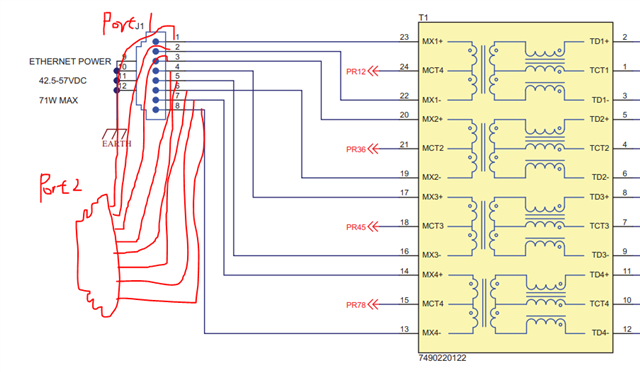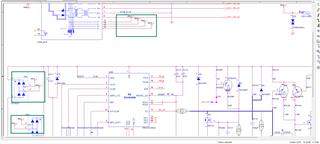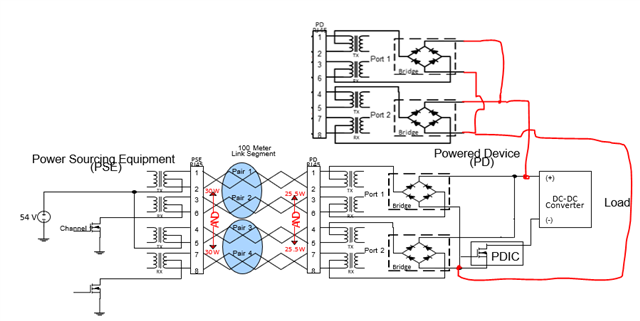Tool/software:
Hi TI Team,
I would like to know about the below query.
In our design we have two POE++ supported 10GBase-T RJ45 Ports. But we will be using only one port at a time to power our device(maximum power up to 70W) from an external ethernet switch.
My doubt is whether for the above case, can we use a single Powered device (TPS2372-4RGWR) to connect with two POE++-supported RJ45 ports.
If yes what are the things we have to ensure while designing the circuit and layout




